This statue was carved in the style of the Mangbetu people of DRC. The statue depicts a male figure with an elongated head, a typical Mangbetu tradition. The statue measures 40.25 inches tall including base and weighs 12.5 pounds. There is some cracking and wear and tear throughout – please inspect photos.
Beautiful Mangbetu Male Statue 40.25″ on Base – DRC – African Art
$340.00
Sold
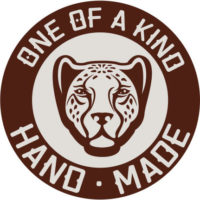
| Type of Object | Figure, statue |
|---|---|
| Country of Origin | DR Congo |
| Ethnicity | Mangbetu |
| Material | Wood, Pigment |
| Approximate Age | Unknown |
| Height (Inches) | 38.75" figure | 40.25" including base |
| Width (Inches) | 6.5" figure | 10.5" base |
| Depth (Inches) | 9" |
| Weight (Pounds) | 12.5 lbs |
Tribe Information
About the Mangbetu People
“When the Mangbetu tribespeople left the Sudan in the middle of the 18th century, they re-located their kingdom in the north-eastern part of the Democratic Republic of Congo (formerly Zaire). Their social structure is not dissimilar to the other Zairean forest-based tribes where the men hunt and fish, while the women are left to cultivate the manioc fields. Ultimate authority over the 40,000 Mangbetu rests with a king whose sons govern the various provinces, which are divided into districts and villages. The Mangbetu tribe have been at war with their neighbours, the Zande, since the 18th century. Historically, Mangbetu are known for supposed cannibalism although it is not proven. They continue to practice “lipombo” a binding of the head, wrapped so tightly during infancy that it creates a lifelong elongated form of the skull. Mangbetu art was produced exclusively to enhance the prestige of the court and therefore it is not surprising that masks, which are usually associated with initiation ceremonies, were not produced.”
Source:
Baquart, Jean-Baptiste. The Tribal Arts of Africa. New York: Thames and Hudson Inc. 1998. Print.
Additional Information
About the Mangbetu Figures
Mangbetu artists have sculpted a series of ancestor figures, male and female, about 60 cm high, in light wood with linear scarifications on the body. Wooden figures are believed to be ancestral portraits.
You must be logged in to post a review.

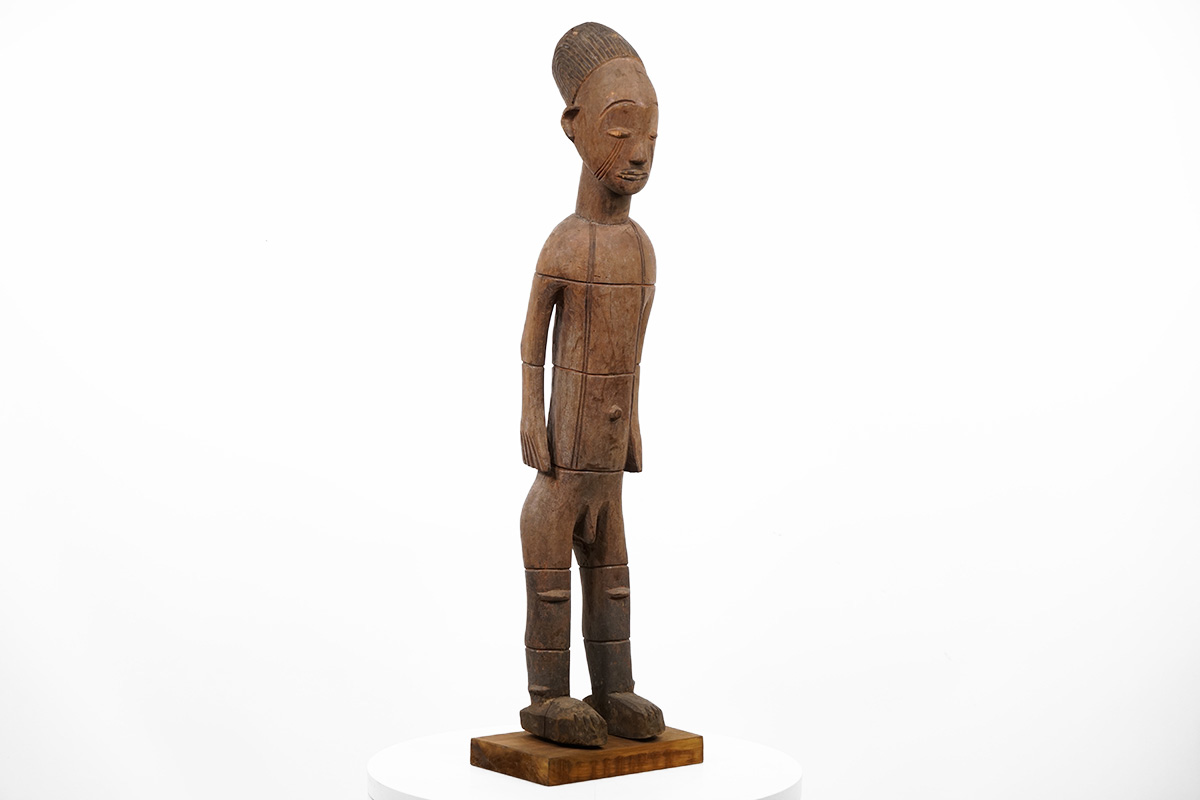
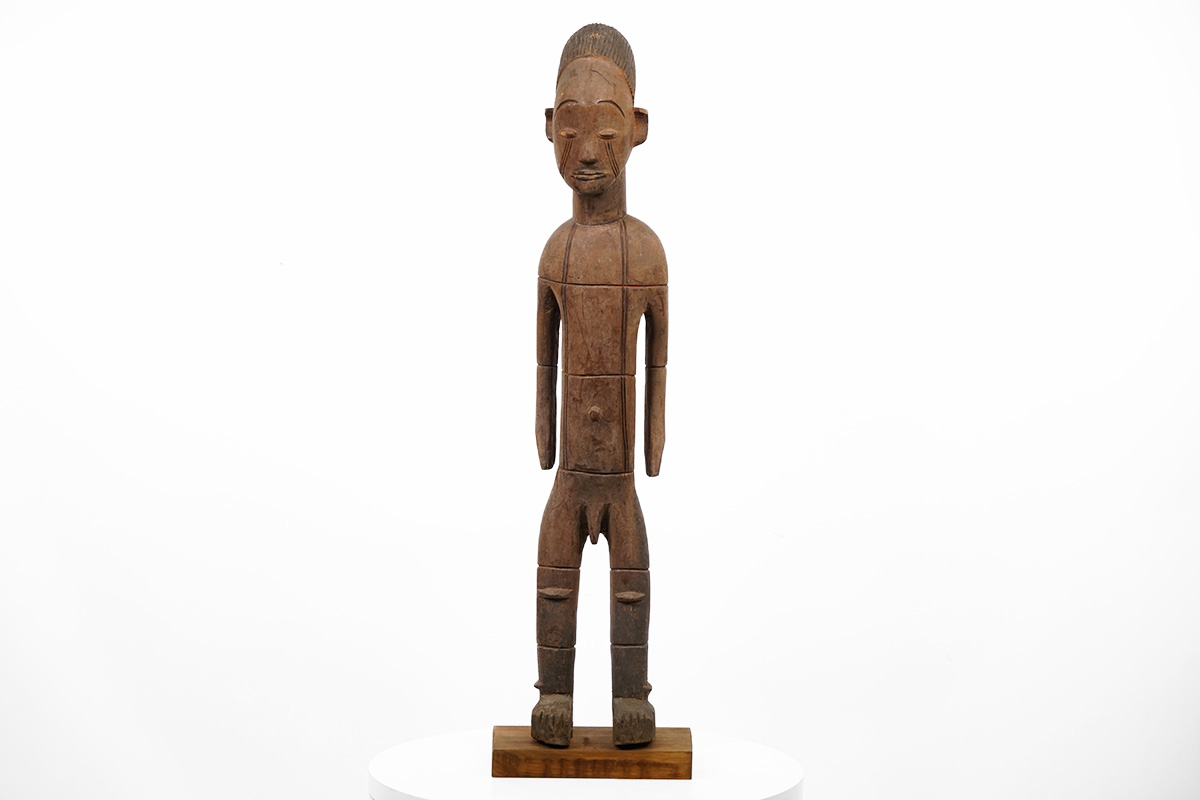
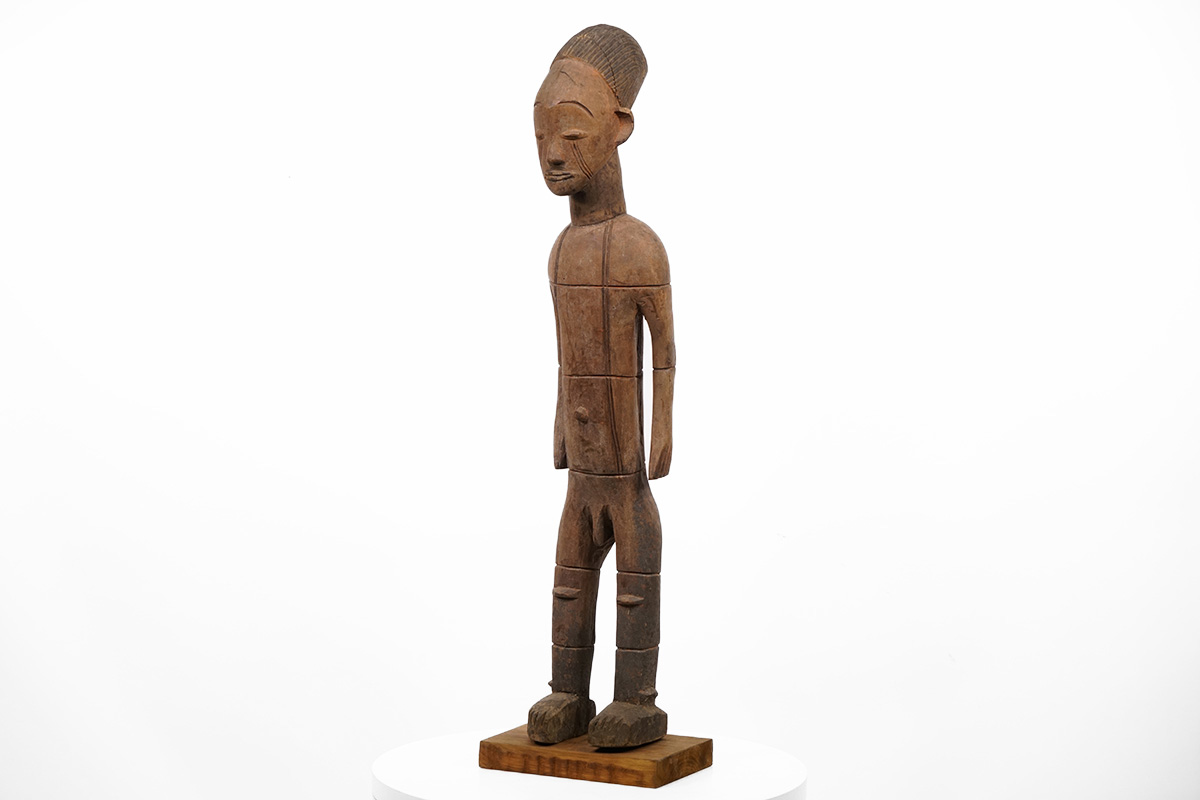
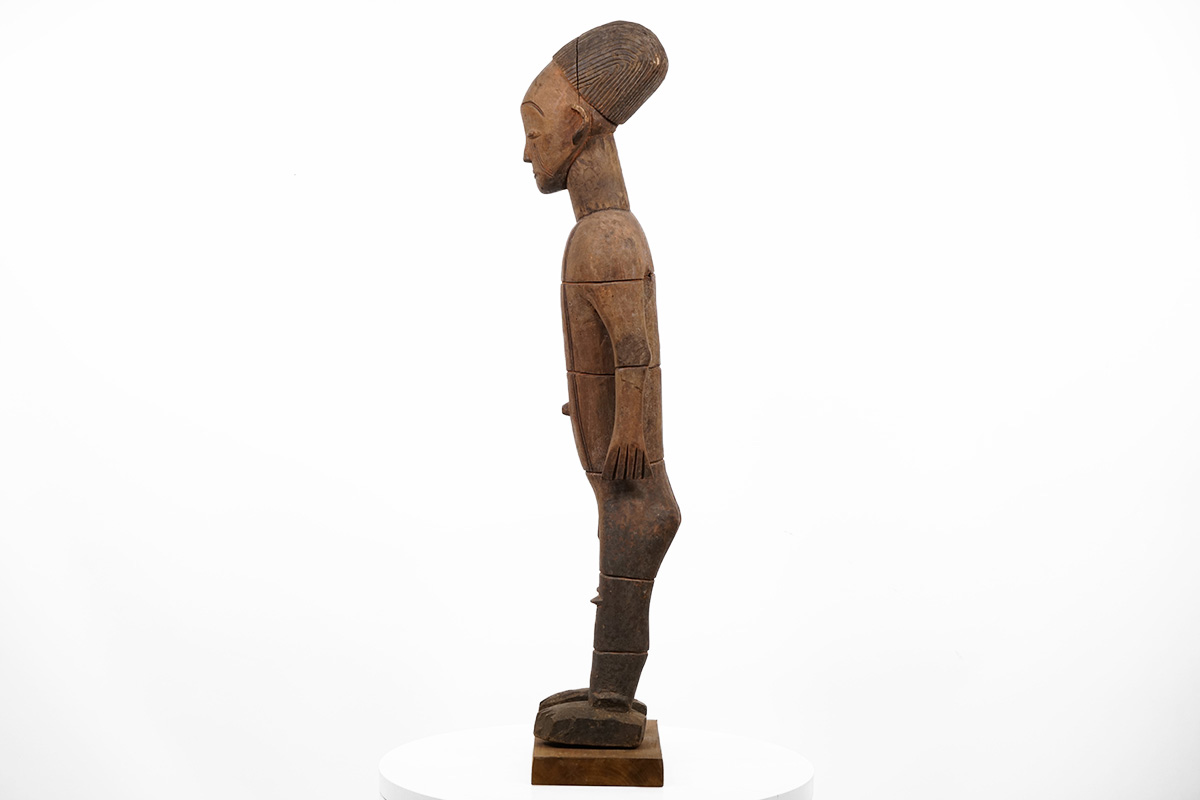
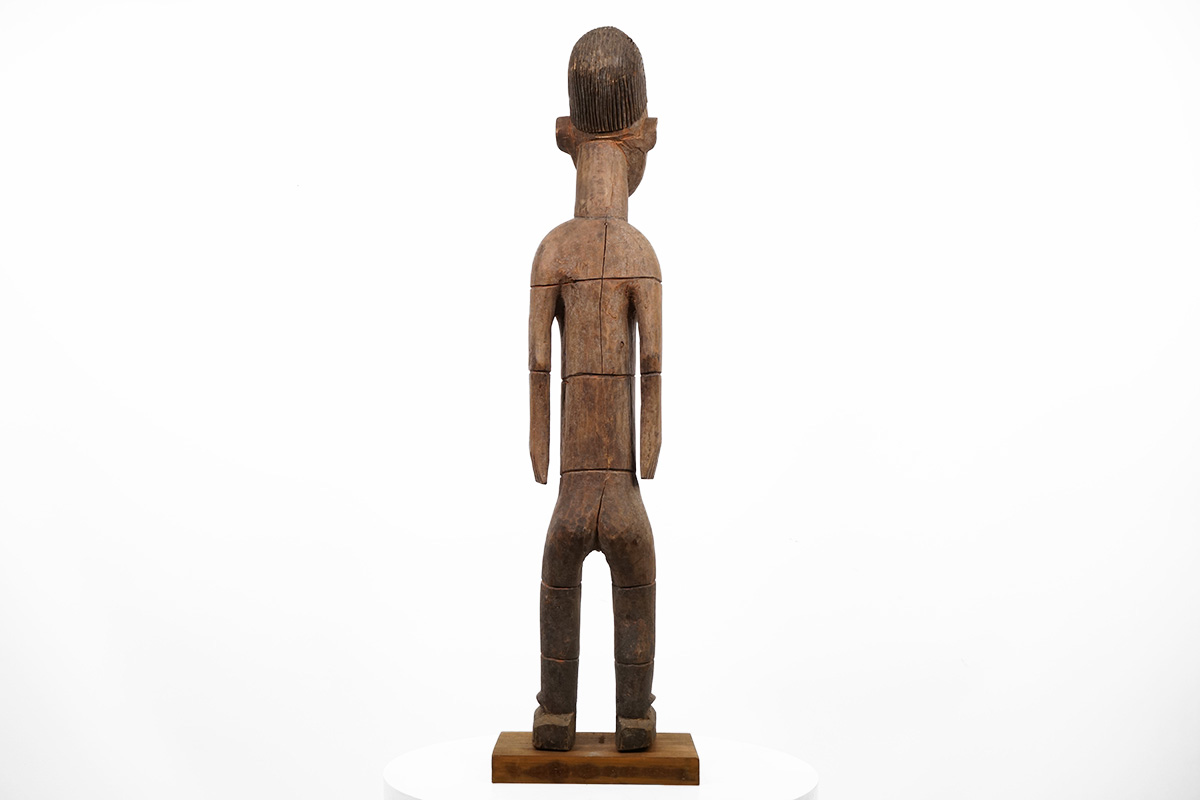

Reviews
There are no reviews yet.